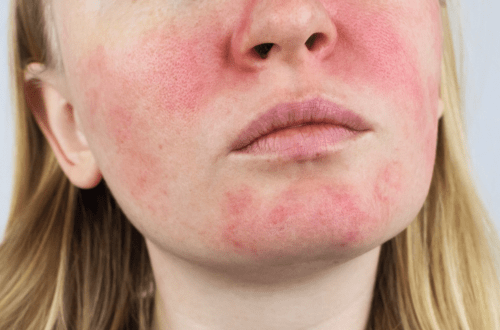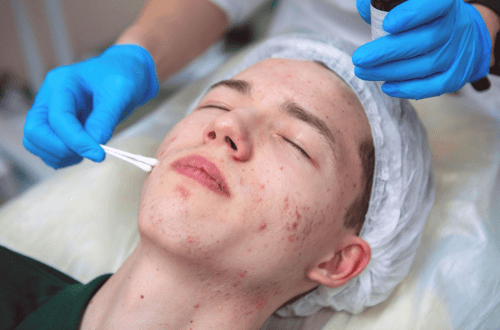Rosacea: Causes, Symptoms, and Latest Treatment Options
More than 5% of the world’s population suffers from rosacea, a chronic yet treatable inflammatory skin condition that causes flushing or long-term redness on the face. Because this common dermatologic condition is primarily determined based on clinical judgment, many individuals, even those with mild symptoms, may be living with undiagnosed rosacea. Typically, the disease favors adults aged 30 to 50 years, particularly females more so than males, and is more prevalent among those with fair skin, affecting over 10% of Caucasians. In this article, we provide a comprehensive look into the causes and symptoms of rosacea and the latest treatment options available in the hope of creating better awareness.
Read on to learn more about this dermatologic condition!
Rosacea: Causes and Underlying Disease Physiology
To this day, the exact cause of rosacea has not yet been found by dermatology researchers, although they have identified key disease processes. First and foremost, the telltale facial redness seen in patients with this condition is believed to be associated with inflammatory signals initiated by neurovascular dysregulation and the innate immune system. Particularly, the etiology of rosacea has been linked by recent studies to small antimicrobial peptides called cathelicidins, which are key components of the innate immune system in humans. Further research has also found that a noticeable increase in mast cells, a subtype of immune cells also implicated in asthma and allergies, may be linked to all common signs of rosacea.
Other potential causes include specific genetic variants, ultraviolet (UV) exposure, as well as a microscopic mite, named Demodex folliculorum, which appears to be more abundantly present on the faces of patients with rosacea. Individuals with this condition are also at an increased risk for multiple potentially serious systemic diseases, suggesting it may be a result of systemic inflammation associated with cardiovascular disease, gastrointestinal disease, autoimmune diseases, and certain cancers. Overall, rosacea appears to have multifactorial causes, involving genetics, immune reaction, microorganisms, environmental factors, and neurovascular dysregulation.
Key Signs and Symptoms of Rosacea
Rosacea is primarily diagnosed using clinical judgment, although it can often be mistaken for acne, dermatitis, or other skin problems. According to medical experts, the diagnosis of rosacea requires the presence of either at least one diagnostic sign or two major signs, as listed below. Although secondary signs and symptoms are common, clinicians do not rely on them for a diagnosis.
Diagnostic Signs of Rosacea:
- Persistent Redness
- Skin Thickening
Major Signs of Rosacea:
- Flushing
- Bumps and Pimples
- Visible Blood Vessels
- Eye Irritation
Secondary Signs and Symptoms:
- Burning or Stinging
- Swelling
- Dryness
How is Rosacea Treated?
Because every patient with rosacea will experience a unique set of signs, symptoms, and triggers, its treatment requires an individualized approach. Although the main common element shared across all available and emerging therapies for this dermatologic condition is their goal of reducing inflammation.
1. Patient education and skin care for rosacea
The first and most important step to treating rosacea is for patients to identify and avoid major environmental or lifestyle factors that may trigger flare-ups. The next most important measure is consistently maintaining a gentle skincare routine with non-irritating products, including pH-balanced skin cleansers, broad-spectrum sunscreen with SPF 30 or higher, and moisturizers. Patients with rosacea may also be recommended to look for products with mild or pediatric formulations, considering the disease typically sensitizes the skin, as well as mineral sunscreens that contain zinc or titanium dioxide instead of chemical sunscreens. Another approach involves using cosmetics with a green tint to them to help mask any redness on the face.
2. Topical therapies
There are nine treatments for rosacea that are currently approved by the United States Food and Drug Administration (FDA), including topical therapeutics like brimonidine and oxymetazoline for flushing and erythema, and medications such as ivermectin, azelaic acid, sodium sulfacetamide, metronidazole, and encapsulated benzoyl peroxide for papules and pustules. Of these, encapsulated benzoyl peroxide is the newest treatment option, approved in 2022; although it was previously too irritating for those with rosacea, its gradual delivery via an encapsulated vehicle allows the medication to be better tolerated in patients. There is also ongoing research exploring the anti-inflammatory effects of topical ivermectin and azelaic acid in downregulating the cathelicidin pathway in rosacea pathophysiology.
3. Oral antibiotic agents
Among oral medications for rosacea, the most common are tetracyclines, such as doxycycline and minocycline, particularly for papulopustular (PPR) disease phenotypes. These agents have anti-inflammatory properties at specific doses that can reduce inflammatory lesions and antibiotic resistance. Tetracyclines also downregulate inflammatory processes by targeting the LL-37 pathway and inhibiting proteins called matrix metalloproteinases. For PPR rosacea, recent studies have especially found minocycline to be the most effective and safe antibiotic therapy for treating papules and pustules.
4. Laser and light therapy
Laser treatment is a unique approach currently recommended for patients with rosacea to improve symptoms, particularly enlarged blood vessels, and long-term redness. However, this form of therapy is typically most effective on untanned, non-brown, or non-black skin due to the risk of permanent color changes. Its side effects can include redness, bruising, and swelling, potentially requiring weeks and repeat treatments for the full effect to appear.
Conclusion
In conclusion, rosacea is a common chronic inflammatory skin condition that is believed to result from a combination of factors, including genetics, immune reaction, and environmental triggers. The condition is known to have a significant negative impact on the quality of life for patients worldwide, and although there is no cure, there are now various treatments available to manage its symptoms and triggers. These range from lifestyle changes and skincare routines to topical therapies, oral antibiotics, and laser treatments. However, the field of dermatology clinical research is constantly evolving, and with it, so will our understanding of rosacea and development approaches for new treatment options.
About TFS HealthScience Dermatology CRO
TFS HealthScience is a global dermatology CRO that supports biotechnology and pharmaceutical companies throughout their entire clinical development journey for therapeutic innovations in dermatologic diseases like rosacea. As a trusted CRO partner throughout the entire clinical development journey for novel therapies, we have established a strong partnership with our customers, supported by solution-driven teams working for a healthier future in dermatology. Visit our website to learn more about the solutions TFS can offer for your next dermatology clinical trial, or connect with a TFS representative today!
Connect with Us
Contact us today to discover how TFS can be your strategic CRO partner in clinical development.


